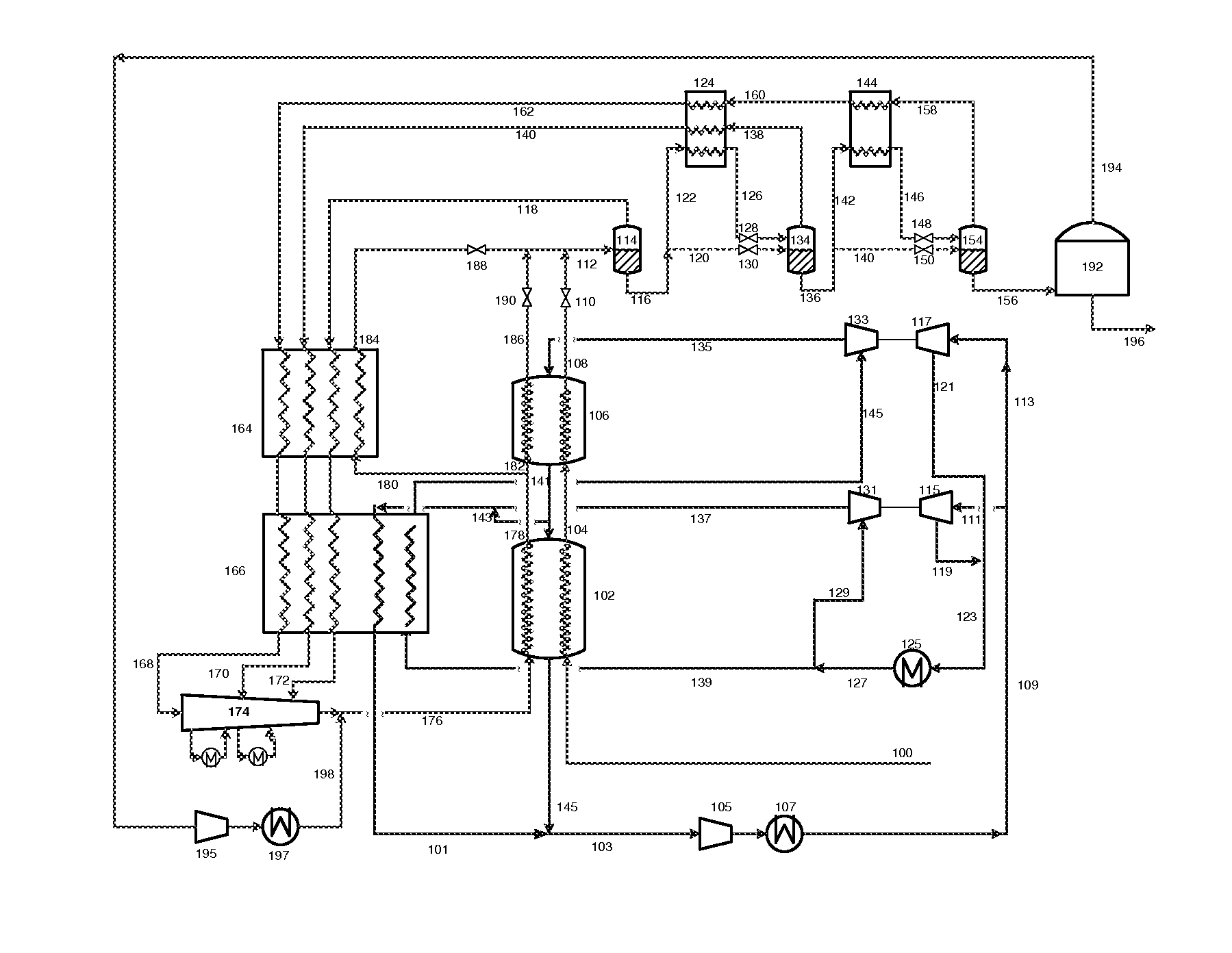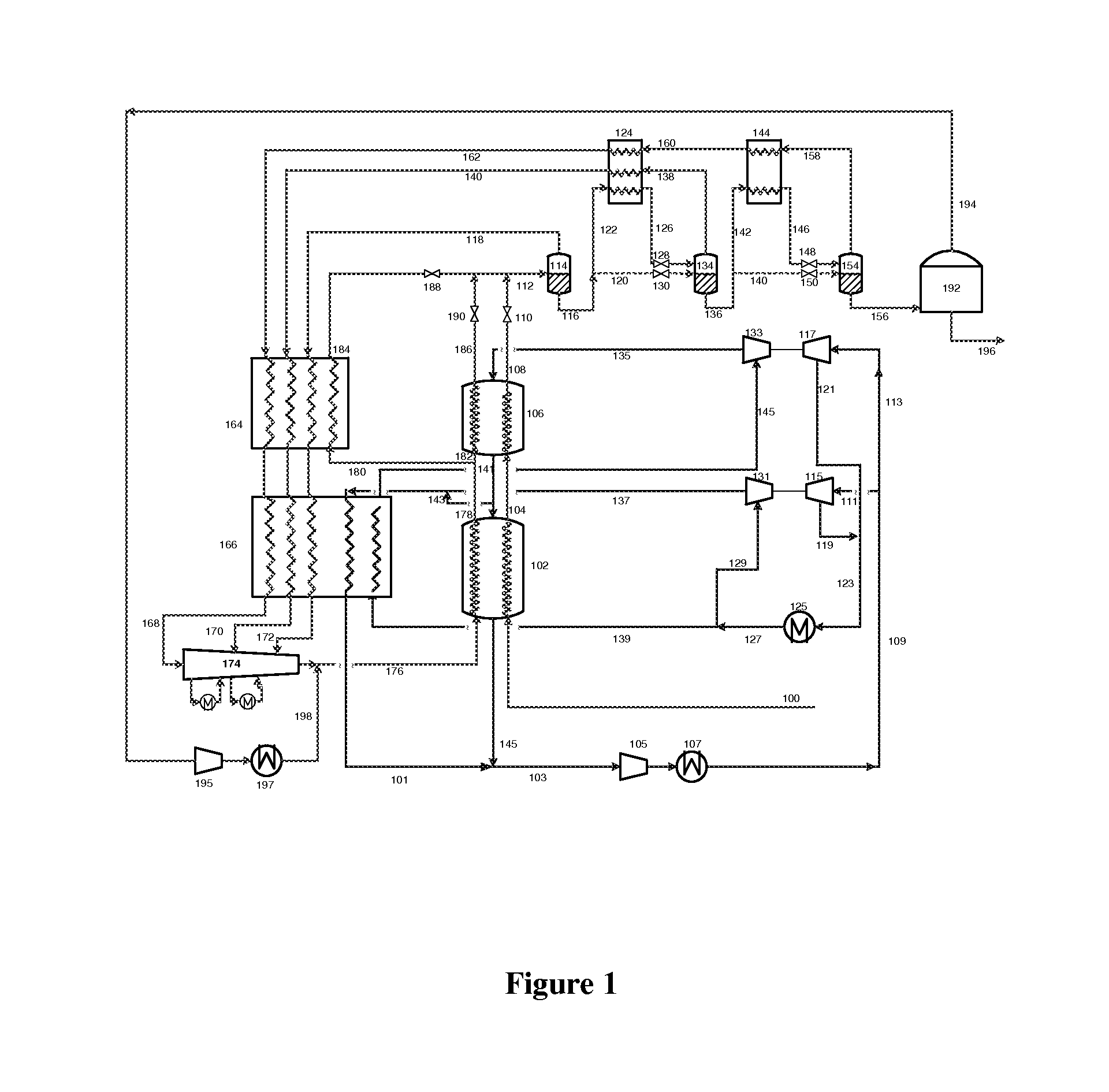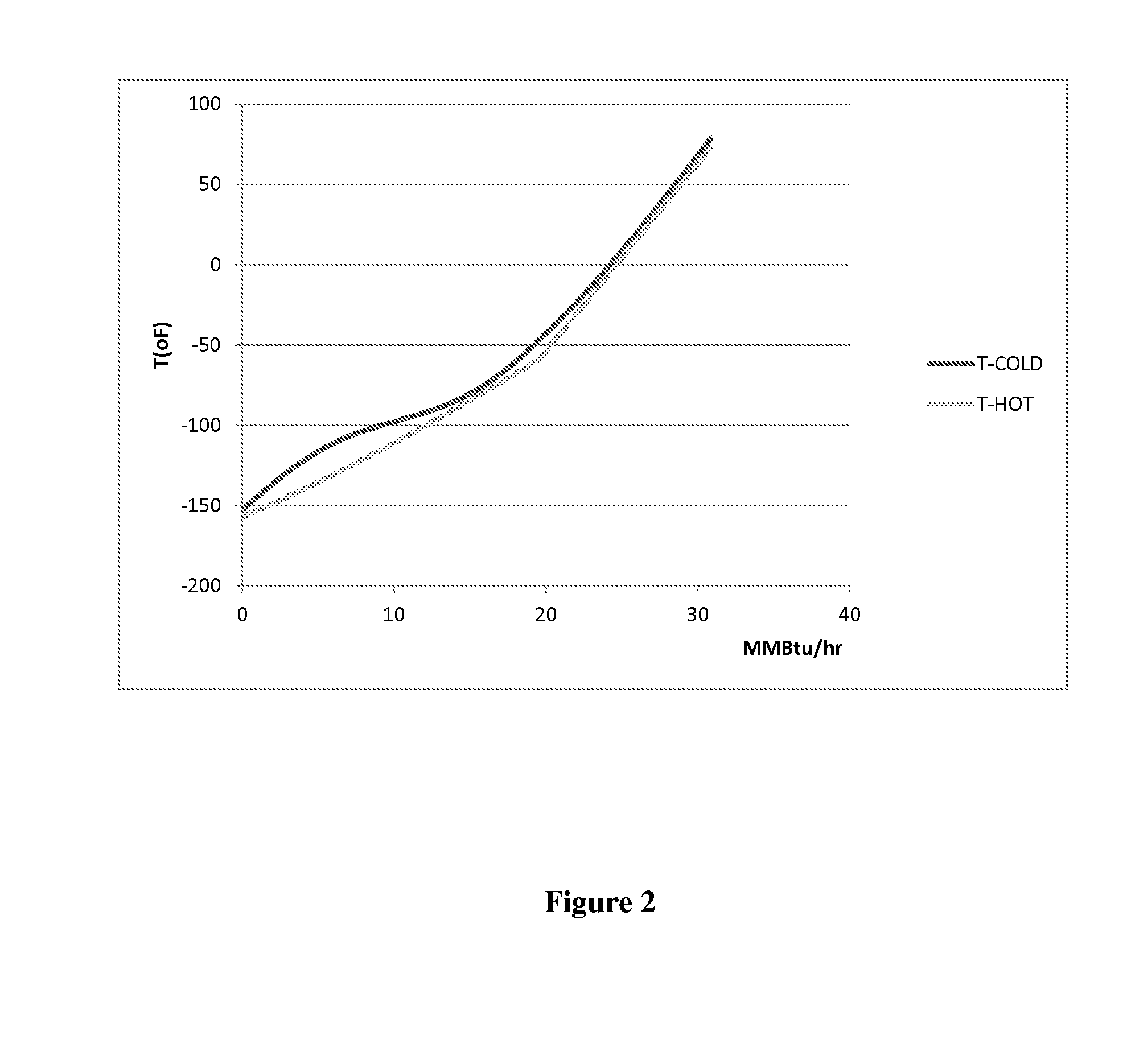Integrated Methane Refrigeration System for Liquefying Natural Gas
a refrigeration system and natural gas technology, applied in refrigeration, liquidation, lighting and heating apparatus, etc., can solve the problems of reduced performance, increased mechanical stress, and large heat exchangers, and achieve the effect of reducing the efficiency of the nitrogen recycle expander process and reducing the mechanical stress
- Summary
- Abstract
- Description
- Claims
- Application Information
AI Technical Summary
Benefits of technology
Problems solved by technology
Method used
Image
Examples
example
[0234]In order to illustrate the operation of the invention, the method of liquefying a natural gas feed stream described and depicted in FIG. 1 was simulated, using ASPEN Plus software. The simulation was conducted on the basis of a natural gas feed stream that comprised 100% methane and a gaseous refrigerant that comprised 100% methane also.
[0235]Table 1 below lists the conditions and compositions of various streams during the simulation (the reference numerals used in Table 1 being the same as those used in FIG. 1). In this simulation, the total specific power of the process is minimized by controlling parameters such as the pressure of each stage of flash, the outlet temperature of each heat exchanger, the split ratio of each stream that is split or divided, and the outlet pressure of each expander, as is known in the art.
[0236]Table 2 shows a comparison between method of FIG. 1, simulated as described above, and the state of the art three-compander nitrogen recycle process, whe...
PUM
 Login to View More
Login to View More Abstract
Description
Claims
Application Information
 Login to View More
Login to View More - R&D
- Intellectual Property
- Life Sciences
- Materials
- Tech Scout
- Unparalleled Data Quality
- Higher Quality Content
- 60% Fewer Hallucinations
Browse by: Latest US Patents, China's latest patents, Technical Efficacy Thesaurus, Application Domain, Technology Topic, Popular Technical Reports.
© 2025 PatSnap. All rights reserved.Legal|Privacy policy|Modern Slavery Act Transparency Statement|Sitemap|About US| Contact US: help@patsnap.com



